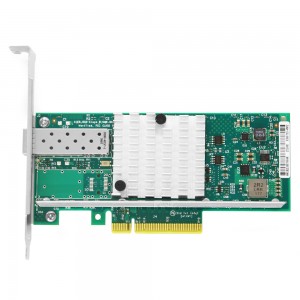According to different transmission protocols, network cards can be divided into Ethernet cards, FC network cards, and ISCSI network cards. The Ethernet card is also called the optical fiber network card. It is mainly plugged into the server and is commonly used in the construction of computer rooms. Please follow JHA Technology to understand the difference between Gigabit and 10G, optical and electrical ports in fiber optic network cards, as well as the difference between fiber optic network cards and PC network cards and HBA cards.
The difference between Gigabit Fiber Ethernet Adapter and 10 Gigabit Fiber Ethernet Adapter:
Gigabit fiber ethernet adapter and 10 Gigabit fiber ethernet adapter are mainly different in transmission rate. The transmission rate of a gigabit network card is 1000Mbps (Gigabit), and the transmission rate of a 10 Gigabit network card is 10Gbps (ten Gigabit), which is ten times the transmission rate of a gigabit fiber ethernet adapter.
The difference between optical port and electrical port of optical fiber network card
Optical fiber network card optical port: The abbreviation of optical fiber port, the interface is divided into SC, ST and LC and other types. The optical module that can be matched is mainly SFP package, and there are other types. When wiring, you need to pay attention to the interface type of the optical port. , Use the corresponding equipment to match it.
Optical fiber network card electrical port: The collective name of various twisted pair interfaces such as RJ45. Currently, the commonly used electrical ports are 100M, Gigabit, 10G, etc.
The difference between the optical port and the electrical port of the optical fiber network card: the transmission distance is different, the maximum transmission distance of the electrical port is only 100 meters, while the multi-mode optical port can transmit hundreds of meters, and the single-mode optical port can transmit several kilometers.
PCI Express x8 Single Port SFP+ 10 Gigabit Server Adapter JHA-QWC101
Post time: Dec-14-2020






